In the period from May 20 to 21, 2019 ground and air training of the landing and fire groups of the Almaty and Taldykorgan aviation departments took place
At the first stage of training, the personnel underwent ground training on the basis of a special derrick simulator, with the aim of thorough and comprehensive training on the ground, working out all the elements of the descent, studying various techniques and training for their implementation.
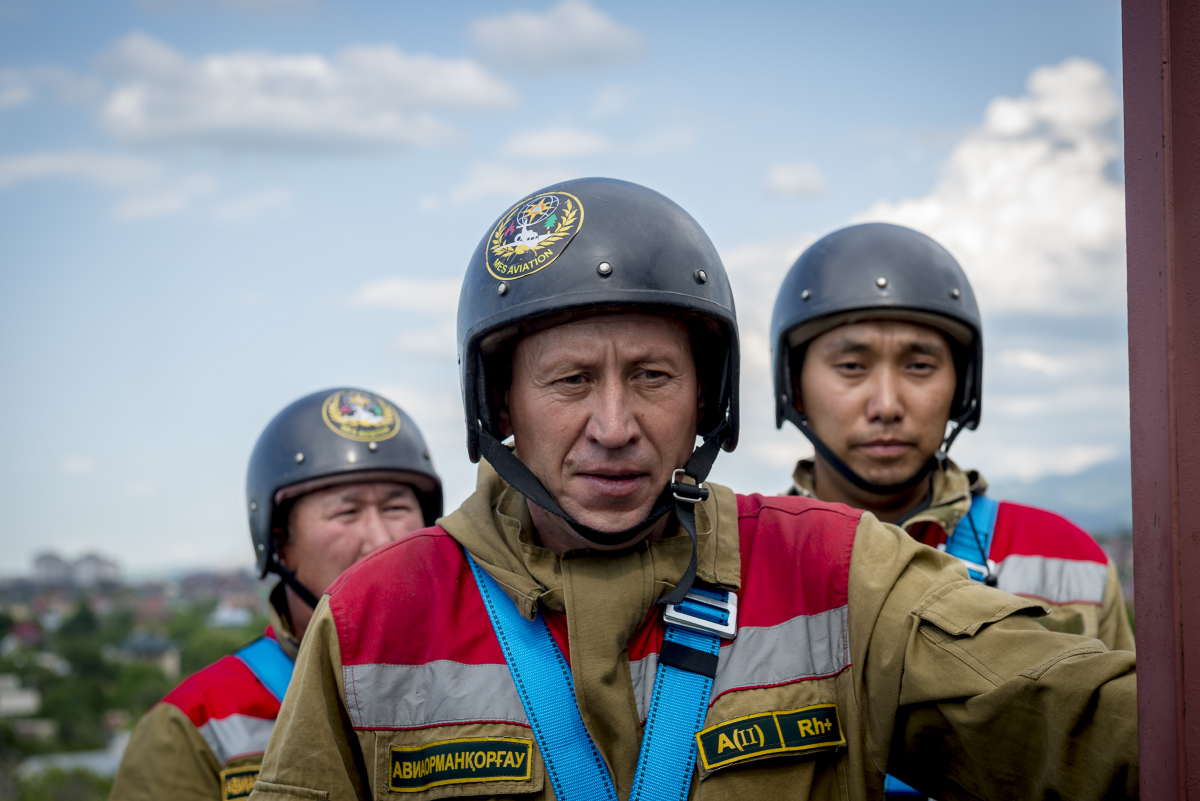

On the same day, on the basis of the Almaty Aviation Branch, an indicative fire and tactical exercise with personnel was held.
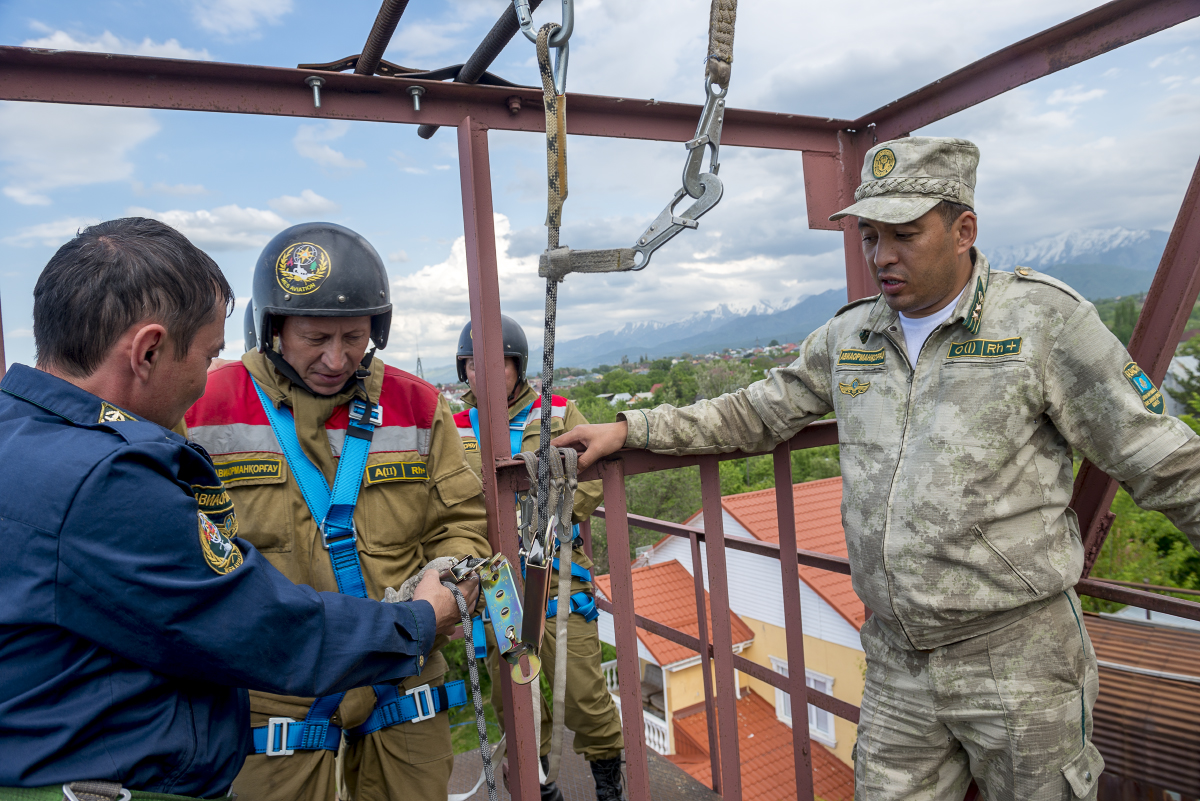

During the exercise, the capabilities of modern fire equipment, training and coordination of the work of the personnel of the aviation department in extinguishing forest fires were demonstrated.
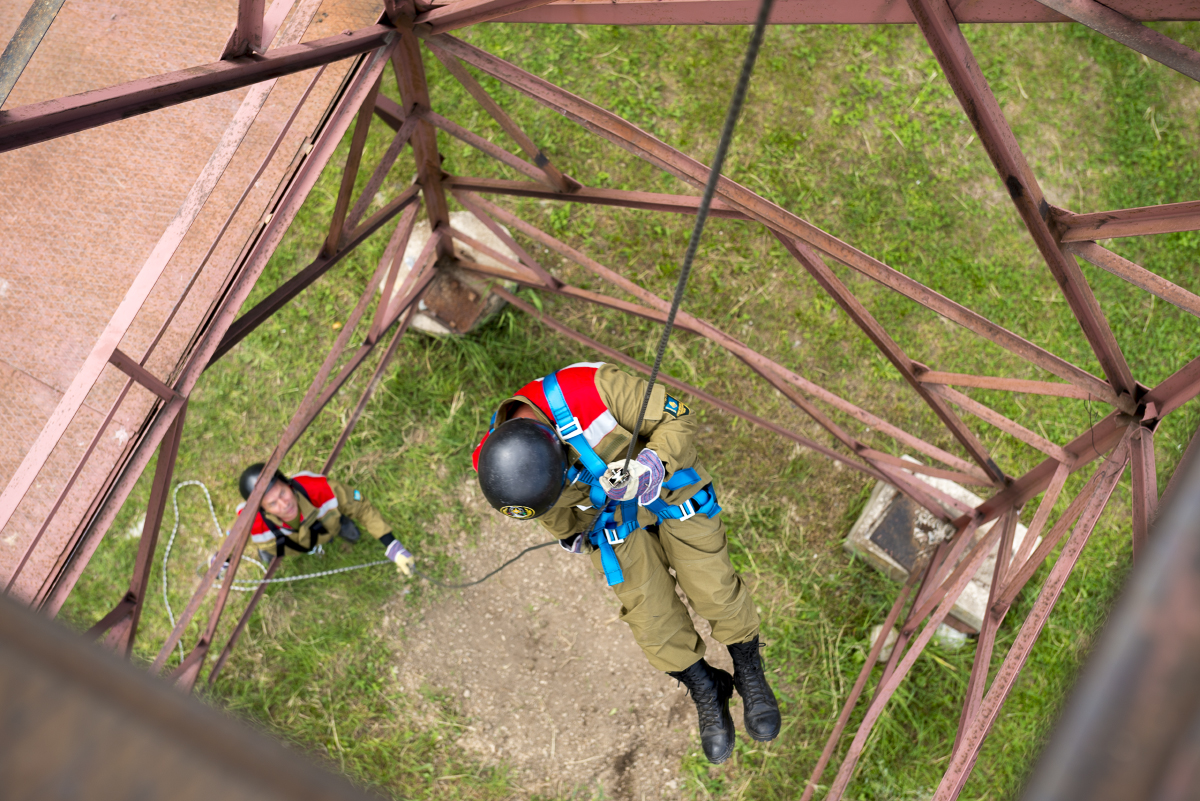

The next day, paratroopers-firefighters made descents from a MI-8 helicopter to the ground using a special trigger device (SUR). Descents were carried out from a height of 10, 20, 30 and 40 meters. From such a height, paratrooper-firefighters have to work directly in extinguishing forest fires.
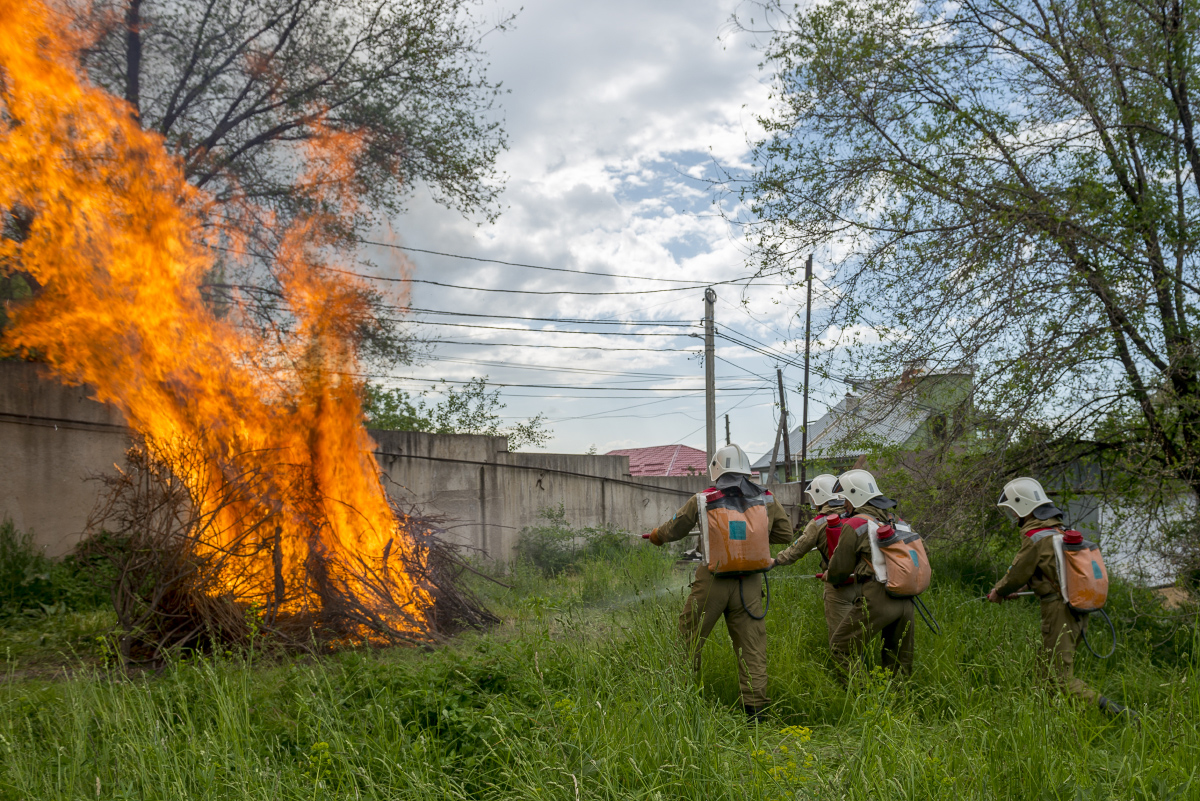

Practicing the skills of the "forest special forces" was conducted by experienced mentors - S.M. Polyakov, head of the APS and the head of the LPS Amanov A.K. General control over the course of training was carried out by Deputy General Director Mambaev Z.M.
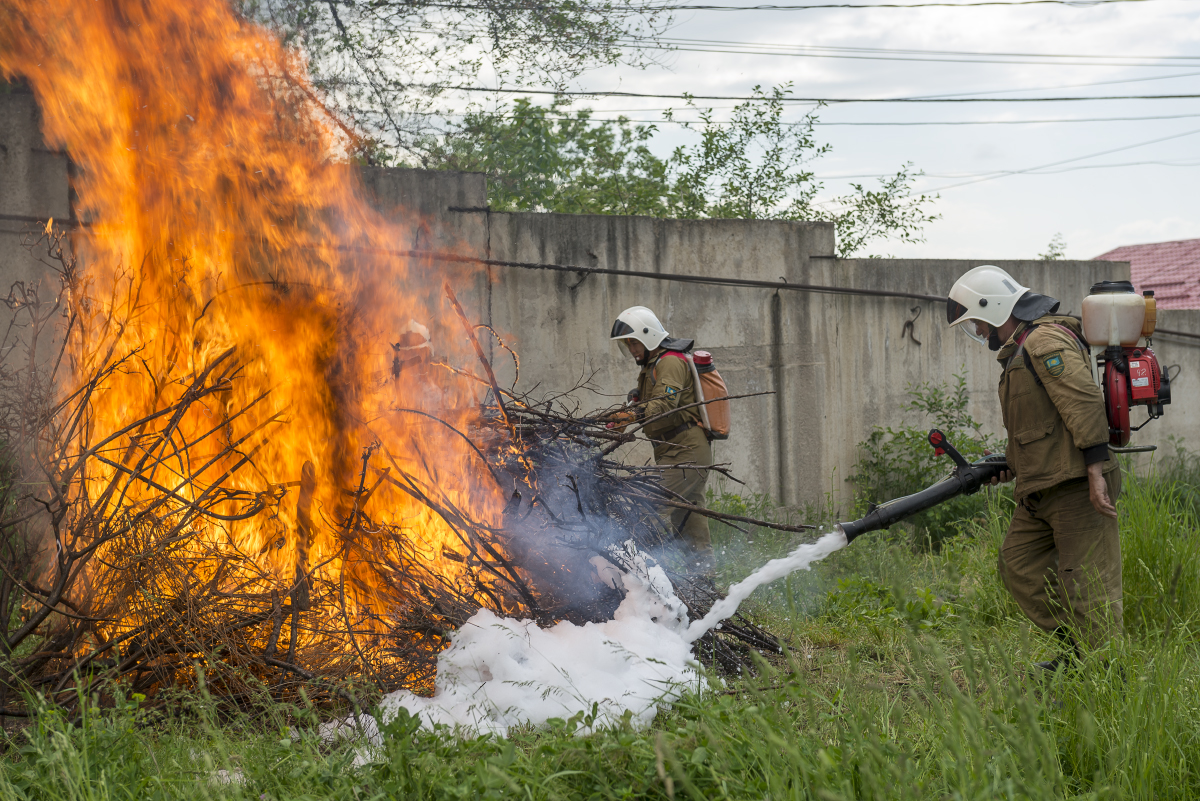

LAUNCHING DEVICE - a device that allows people and goods to be descended to work sites from a helicopter hovering above a forest canopy or other natural object where landing of a helicopter is impossible.
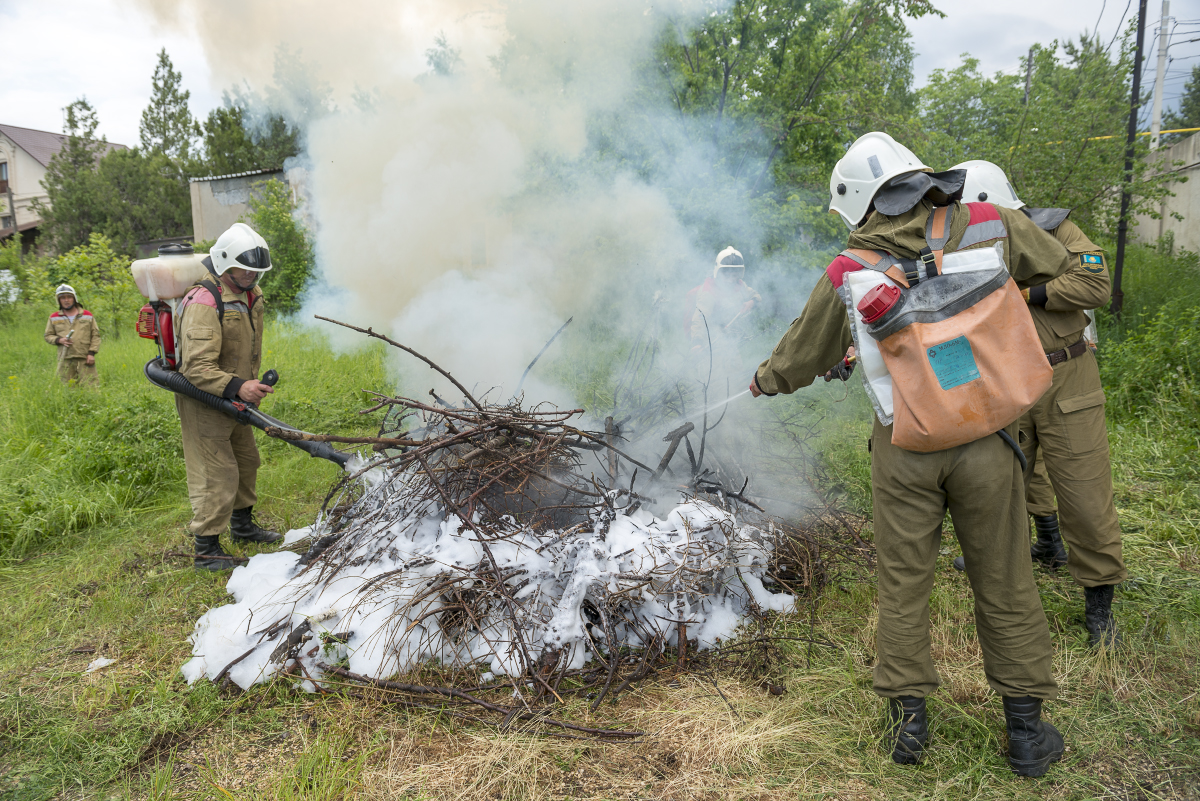

It should be noted that it is not always possible to reach the area of the current forest fire by ground transportation, and when delivering forces and means by aviation, it is not possible to select a site for a safe landing. In such cases, the decision is made to land in the fire area with a helicopter.
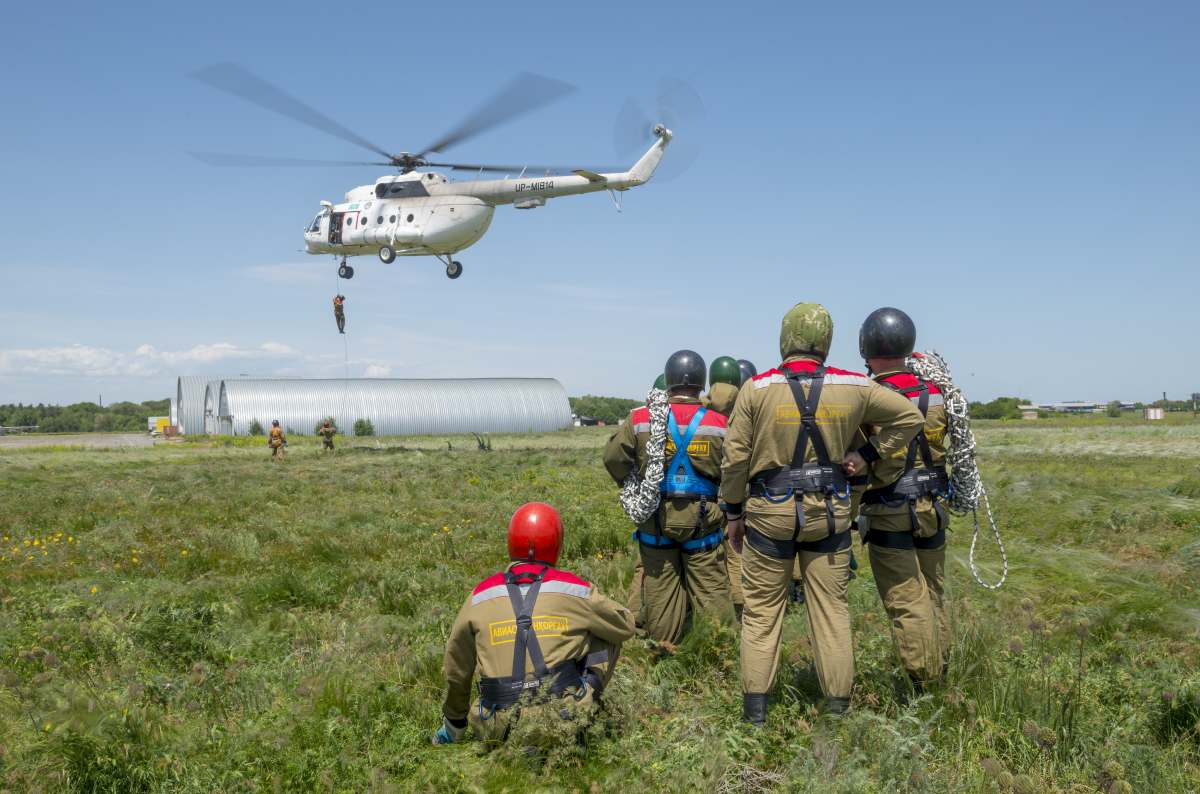

The pilot-observer from the air selects a platform suitable for the descent of paratrooper-firemen, with a size of at least 5x5 meters between the trees' crowns.
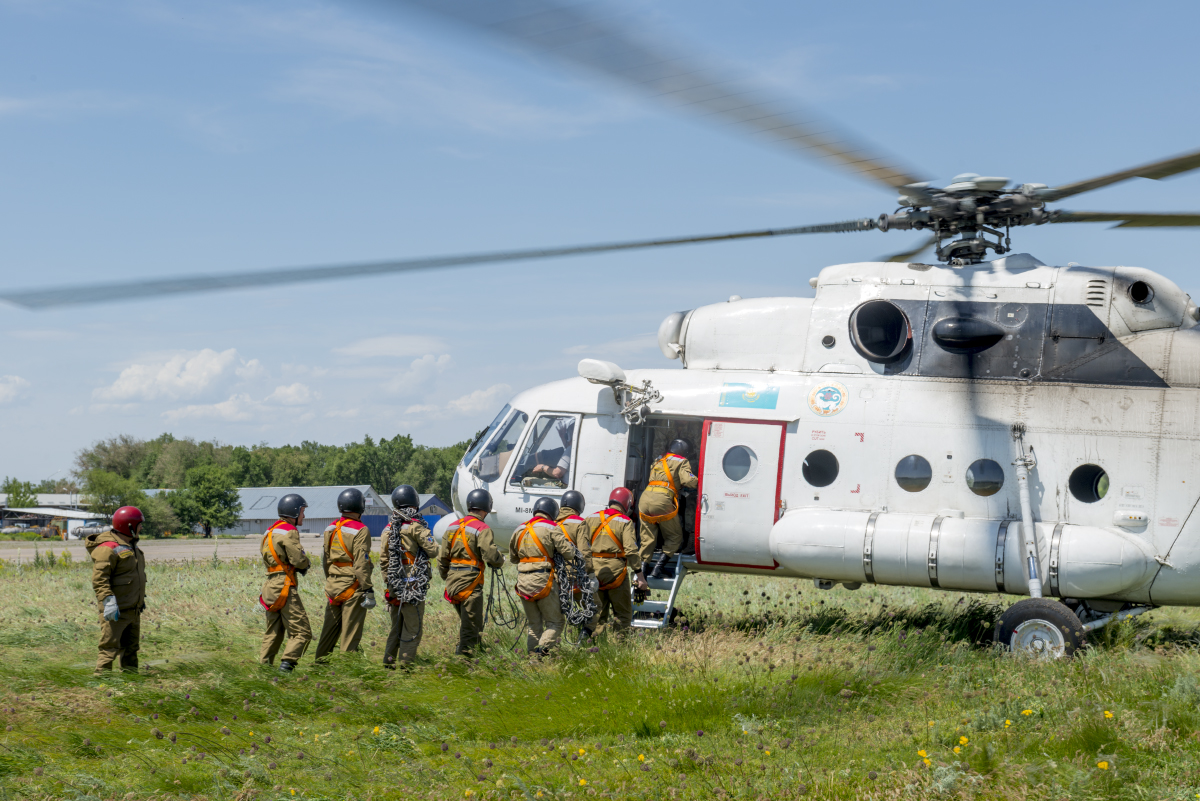

When deciding to perform descents and choosing a place to descend, the issuer asks the commander of the helicopter "Allow me to prepare for descent". Having received the answer "Allow", he gives the command to the paratrooper-firemen "Prepare for descents" and puts on a safety belt or insuring suspension system.
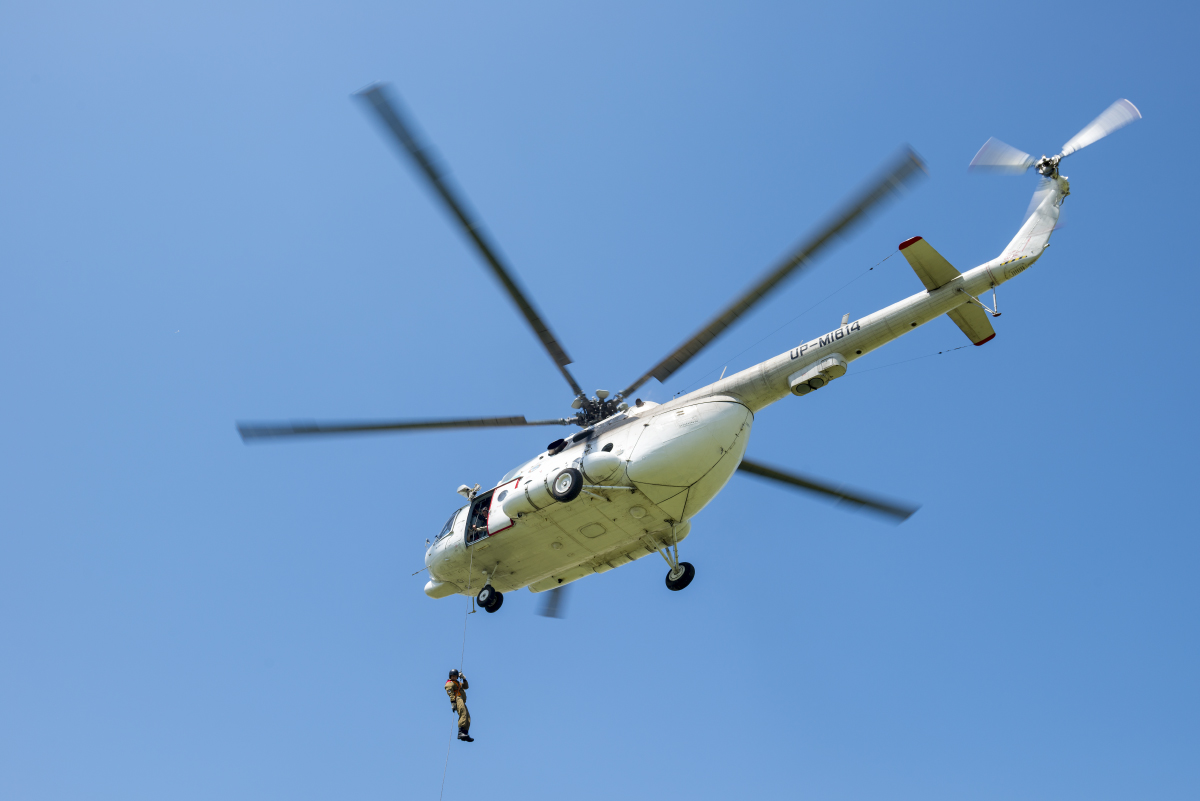

Carabiner halyard or rope is secured to the power node in the helicopter. The helicopter hovers above this "well” at a height of at least 10 meters above the treetops (the height to the ground should not exceed 45 meters).
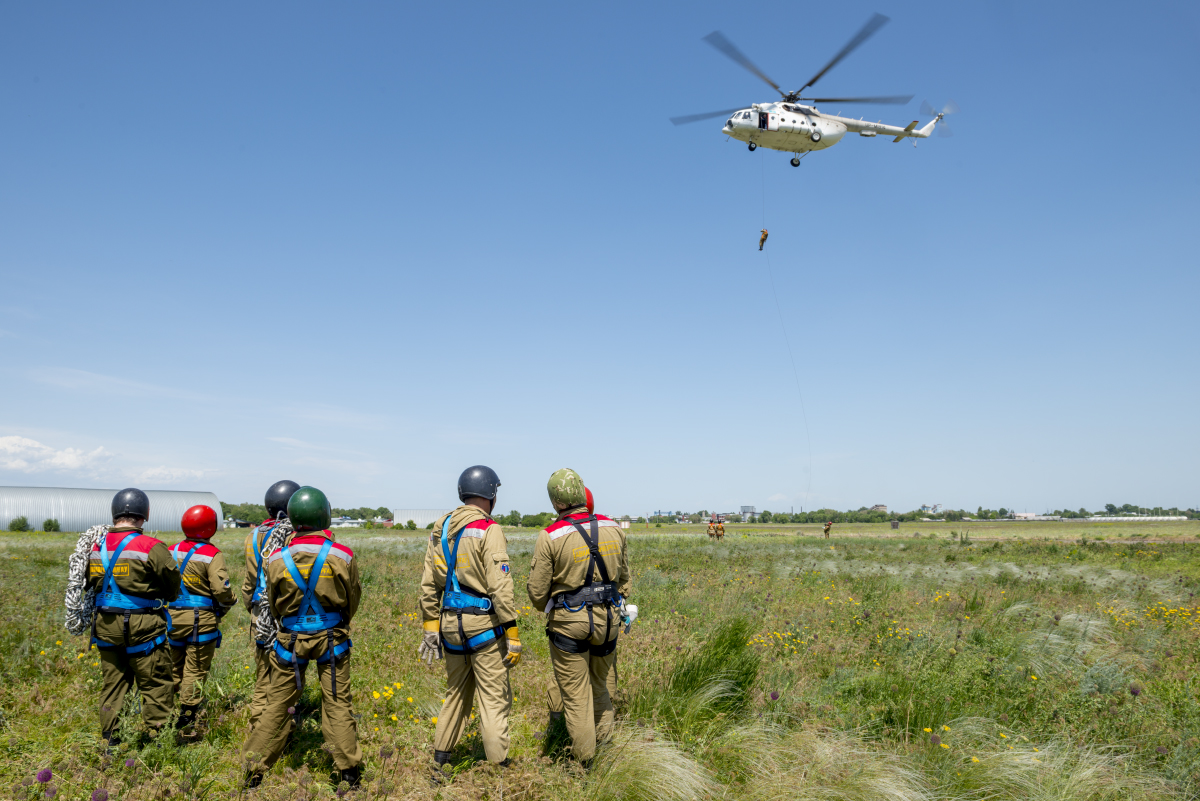

The pilot-observer opens the door and drops a particularly strong (900 kg to break) 50-meter cord, through which the paratroopers-firemen descend directly from the helicopter to the ground using a trigger roller device.
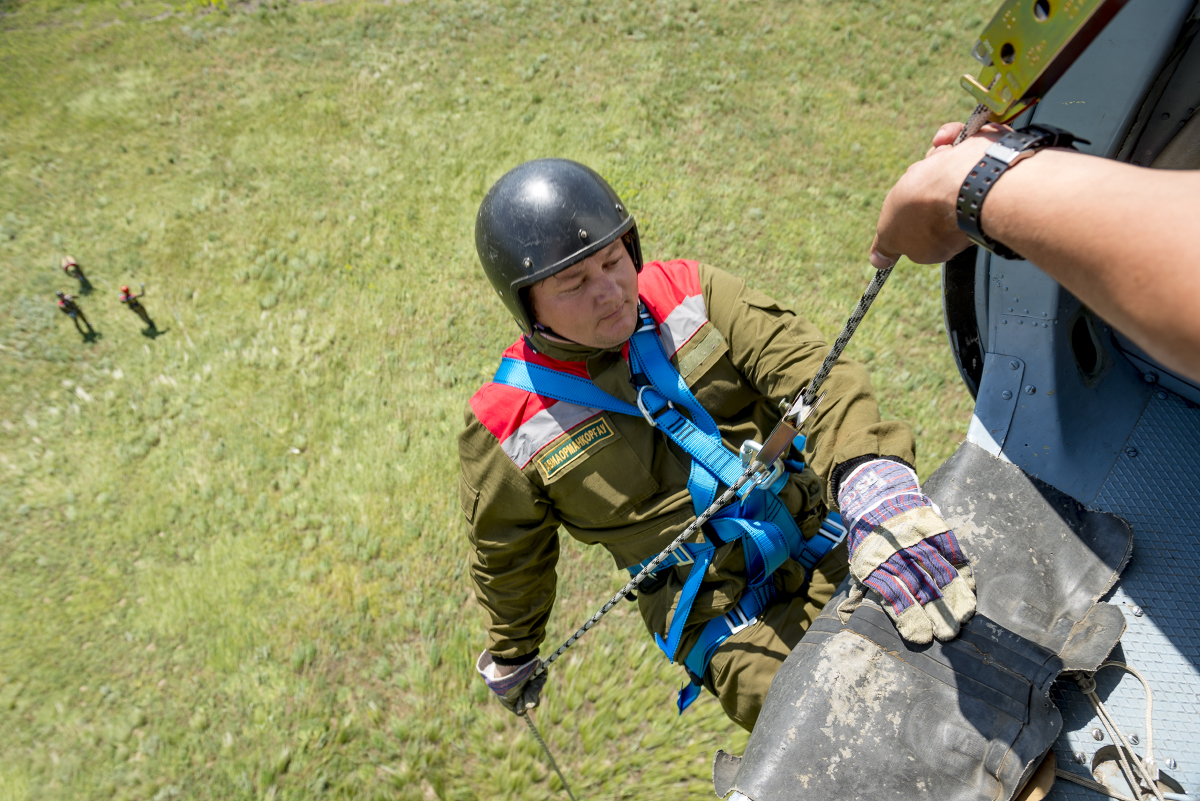

If the cord bay has dissolved and reached the ground, the issuer of SPU reports to the helicopter commander: "the bay is dropped, dissolved to the ground, allow the first to descend" and, having received the answer: "I allow", gives the command to the first: "to descent".
The first must go down the senior group, which, descending, is obliged to insure the next descending paratroopers.
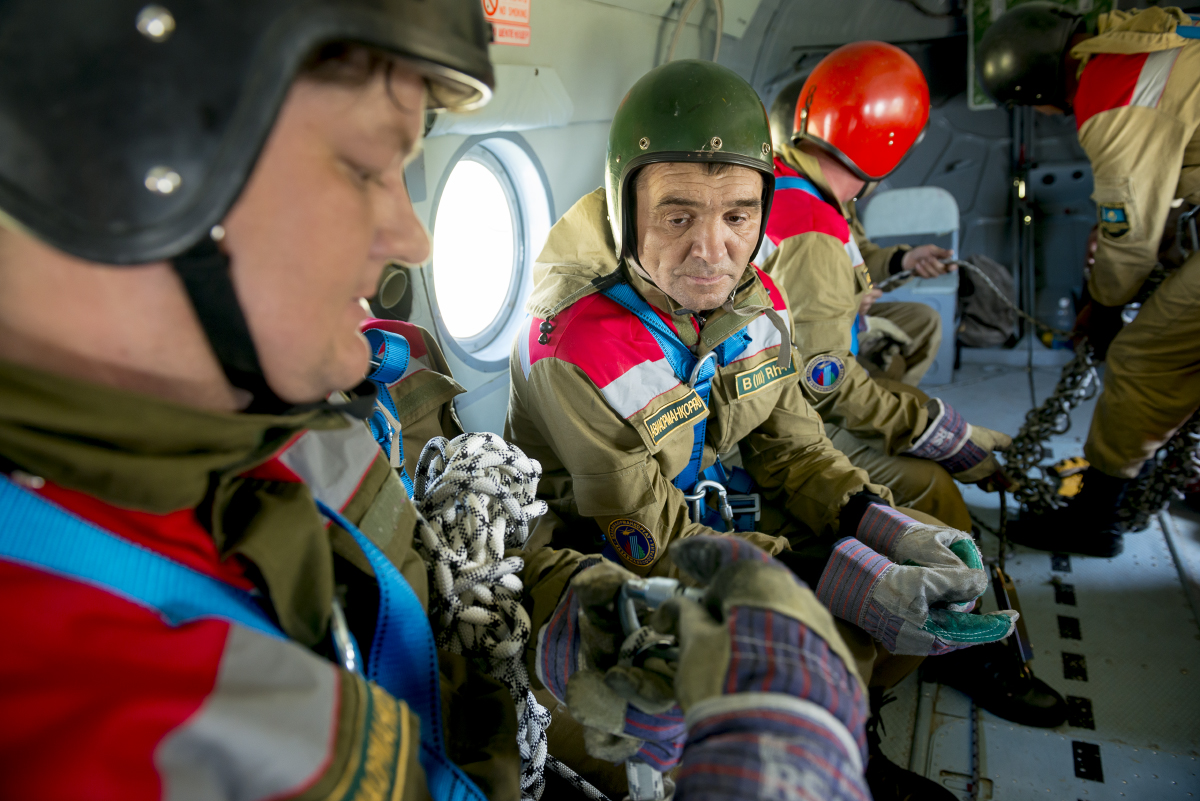

Issuing after the descent of the first paratrooper-fireman reports on the SPU to the commander of the helicopter: "The first one landed, allow the second to descend." Having received permission, the second paratrooper-fireman descends, the descent is carried out similarly to the first.
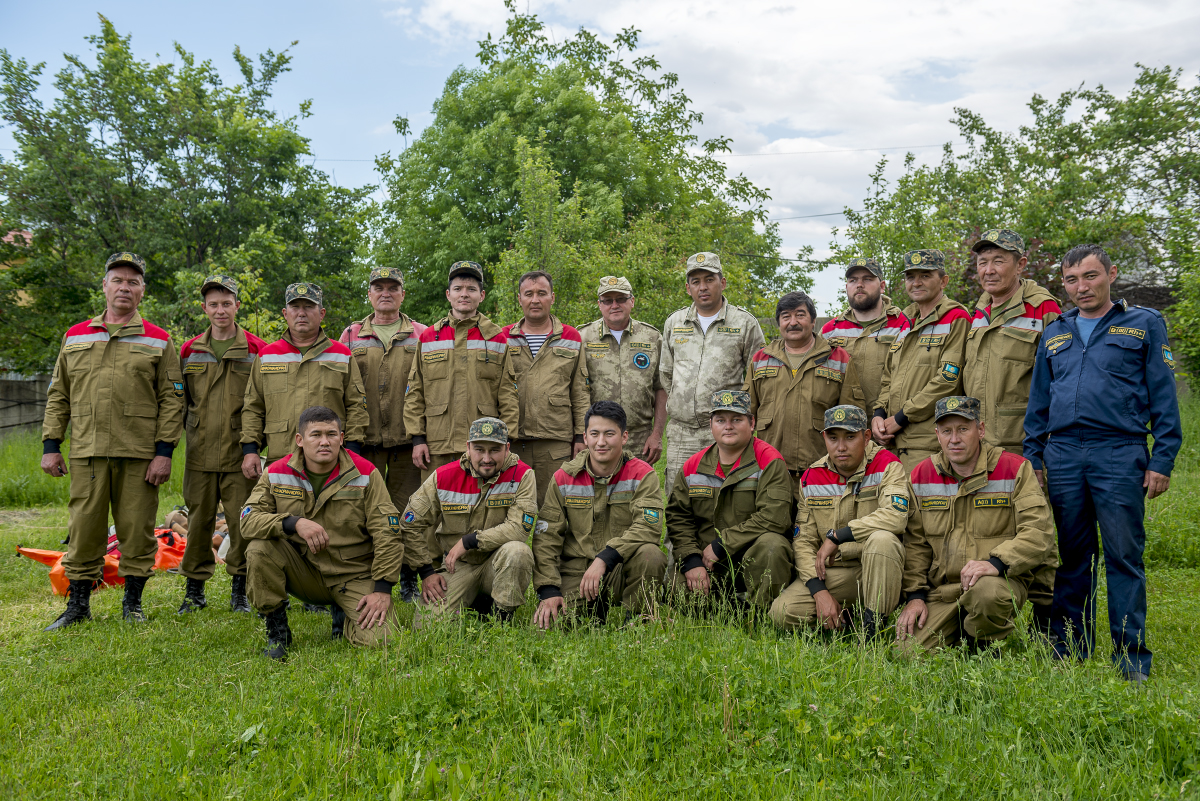

After the end of the descent of the paratrooper firemen, the discharger releases the carabiner of the cord from the earring and drops the cord down. The issuer reports to the helicopter commander at SPU: "The slopes are over, the cord is reset, the door is closed."
During the training, the interaction of the commander of the helicopter, the pilot-observer and the paratroopers-firemen, the speed of descent (average - three meters per second), the correct landing and much more are tracked.
Photos by Grigory Bedenko